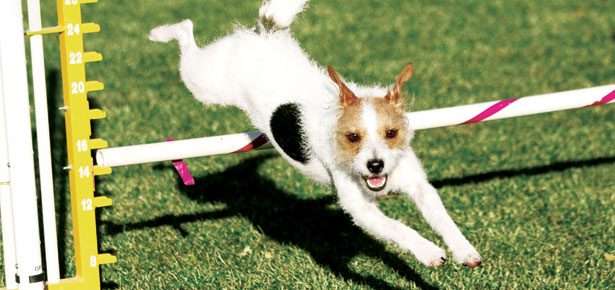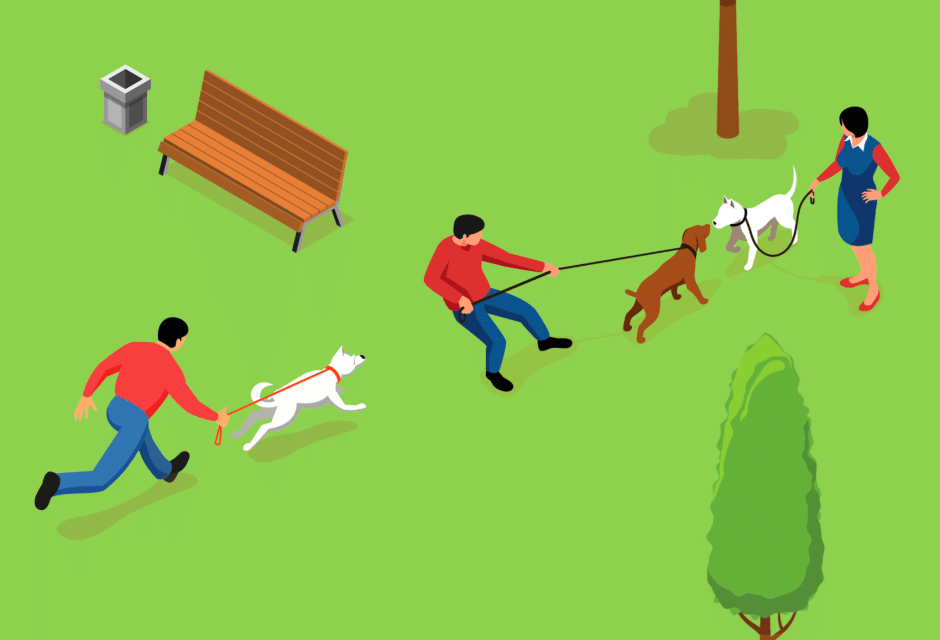
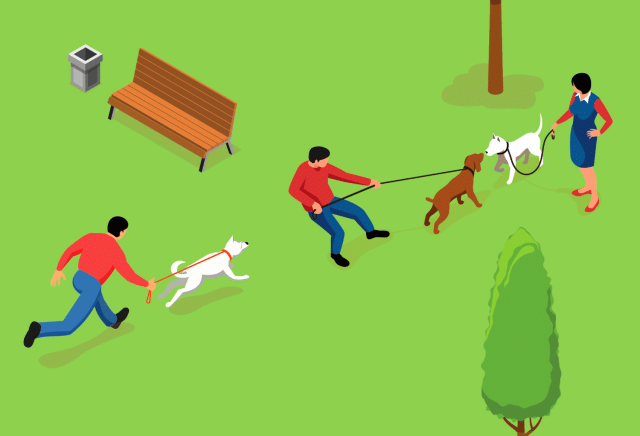
Are Dog Parks Actually Bad for Dogs?
A canine behaviour specialist weighs in
A recent opinion piece in the New York Times was titled “Dog Parks Are Great for People. Too Bad They’re Terrible for Dogs.” Maybe it has you thinking twice about dog parks, but you’ve got a high-energy dog who requires plenty of exercise. While walks are wonderful and your backyard is fine for fetch games, you yearn to let your dog run free in a large, enclosed space. There’s a dog park nearby. Should you go, or steer clear? As with so many things, the answer is it depends.
First, The Good Things About Dog Parks
First, the good. A large, enclosed space offers an excellent opportunity for dogs to run full out. Assuming all the dogs present are social (we’ll get to that in a minute), frolicking with new friends can be physically, emotionally, and mentally stimulating. And dogs aren’t the only ones who gain social benefits. Spending time with other dog owners can be enjoyable, and oftentimes those who frequent a park on a regular basis form social groups where they chat while their dogs romp happily together. At my local park, the same group of women meets each morning. It’s early enough that they are usually the only ones there. And despite the fact that their dogs all get along, they are constantly vigilant. They monitor body language, give their dogs breaks when arousal levels get too high, and are able to stop potential problems before things get out of hand. That, my friends, is the best-case scenario.
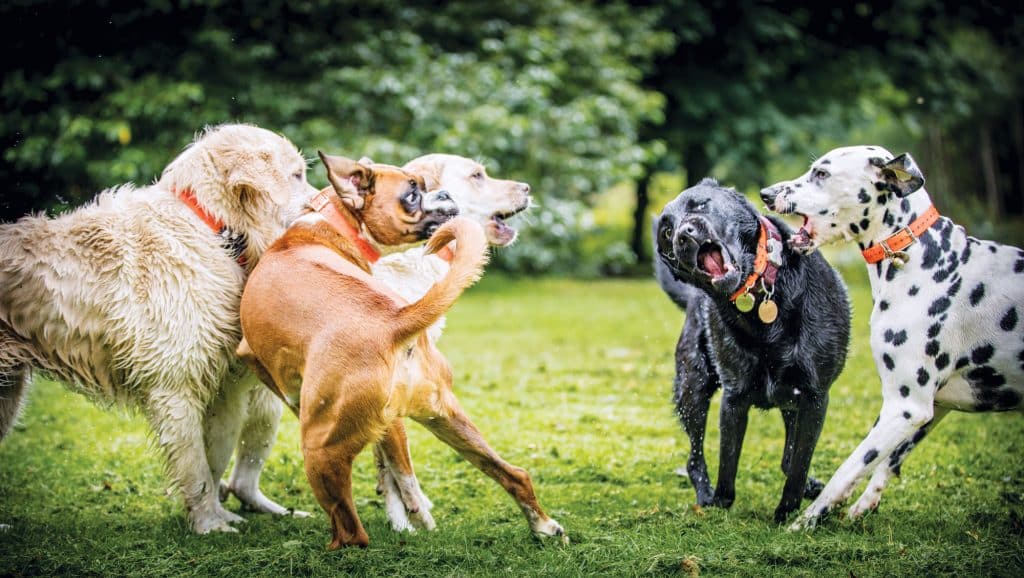
SAJ/Adobe Stock
And the Not-So-Good: Bullying, Attacks, and More
Now for the not-so-good. First, the vast majority of dog parks are completely unregulated. I am not talking here about a paid, private park but the typical public dog park. (Alternatives include the app Sniffspot, which lets people rent out their backyards by the hour to dog owners in search of secure spaces where their pups can play. Most listings are priced at around $10 an hour for one dog or $15 for two. And New York City offers an array of members-only dog parks, for annual fees ranging from free to $2,200.)
At public parks, dogs are not screened for temperament, nor is there a monitor on site to prevent fights or to ask unruly dogs or people to leave. Combine that with the fact that many people do not keep an eye on their dogs or don’t recognize when a problem is brewing, and bad things can and do happen. Even owners who know that their dogs may be aggressive toward other dogs may attend, which puts everyone’s dogs at risk. Although I would never take my own dogs to a busy dog park, I did spend a lot of time gathering dog-park footage for my Dissecting the Dynamics of Dog-Dog Play seminar. Sadly, I was able to film many incidents of dogs being bullied, with some being targeted over and over. There were also plenty of fearful dogs who, unbeknownst to their owners, were not having any fun at all. And, of course, there were numerous skirmishes and even some full-out fights. It’s important to understand that a dog who is attacked by another dog may suffer not only physical damage, but emotional and mental trauma as well. Even a dog who has never had issues with other dogs can develop fear-based reactivity after a single incident. I know many owners shrug this off, saying that it has never happened to their dog. To those people I say, not yet.
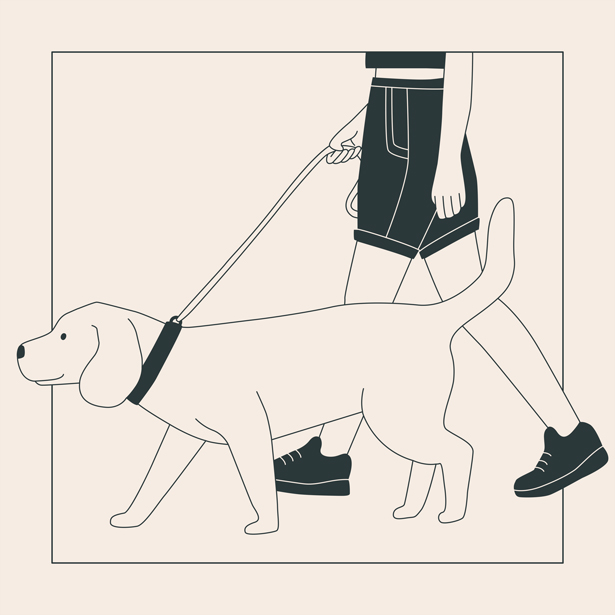
Irina Popova/Bigstock
Should You Take Your Dog to a Dog Park? Probably Not. But If You Do, Here’s What to Look Out For
Many professional trainers, myself included, will advise you to eschew dog parks altogether unless they are well regulated, there are no other dogs present or, at the very least, you are familiar with the other dogs and know that everyone gets along. But if you are going to frequent dog parks, I suggest the following: First, take a few moments before entering to assess the situation. Check that all the dogs look like they’re enjoying themselves, with loose, relaxed body language. Keep an eye out for any signs of tension or snarkiness. Once inside, if another dog bullies yours (or vice versa), step in and call your dog to you, away from the action. Give your dog a break and allow them to calm down for a few minutes. If things get really heated, or you feel uncomfortable for any reason, leave immediately. Once an aggressive episode has taken place, the entire energy in the park changes. The resulting tension often causes further altercations, whether between the dogs who were involved in the fight or others. In short, be an advocate for your dog, whether that means attending dog parks in the safest way possible or finding alternative ways to provide exercise, such as play dates.
This article originally appeared in the award-winning Modern Dog magazine. Subscribe today!
Join the newsletter and never miss out on dog content again!
"*" indicates required fields
By clicking the arrow, you agree to our web Terms of Use and Privacy & Cookie Policy. Easy unsubscribe links are provided in every email.



